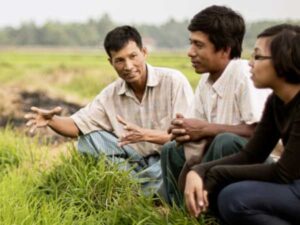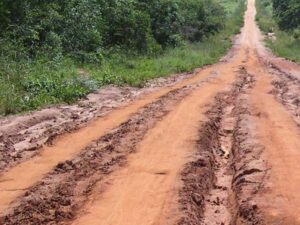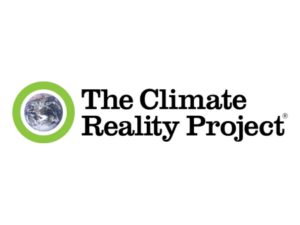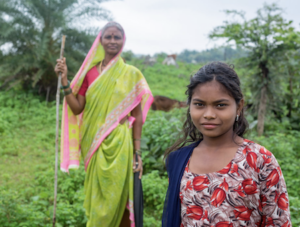Legacy+ supports movement building by teaming up with others and providing shared services like legal, accounting, finance, operations, and team building. WE Charity implemented development programs in Asia, Africa, and Latin America, focusing on education, water, health, food, and economic opportunity.
Craig Kielburger of Legacy+ and WE Charity spoke with Alec Saelens on February 2, 2024. Click here to read the full conversation with insights highlighted.
Alec Saelens: Can please introduce yourself, and tell me what is the problem that you’re trying to address with your organization, and how you’re responding to that problem?
Craig Kielburger: I am the co-founder of WE Charity and Legacy+. WE Charity has a number of aspects to it, but it was mostly inspired by our work focused on engaging young people to be agents of positive change and impact. There are various programs, but I’d like to highlight AP with WE Service where we are able to build into the fabric of the US education system a service-based program. We are the only group in America allowed to verify service on a student’s transcript, so we create this kind of systems-level change where young people use their courses to study about causes and take action on those causes.
Meanwhile, Legacy+ is a backend that supports movement building. We team up with other visionaries and provide shared services like legal, accounting, finance, operations, team building, etc., everything needed to build movements. For example, Legacy+ is helping empower an initiative with Martin Luther King III and his family to galvanize a hundred million hours of service.
Alec Saelens: Who are the main beneficiaries of your work with WE Charity?
Craig Kielburger: Our main beneficiaries would be young people. We serve young people around the world by producing educational content that reaches 152 countries. We help engage those young people to be agents of positive impact, serving their local and global communities.
Part of the original inspiration for a lot of the WE Charity work traces its roots back to a conversation that I had more than 20 years ago at the Raoul Wallenberg Symposium with a group of extraordinary individuals.
One of the questions that the conference was discussing was, “What is the single greatest challenge facing the world?” Over the course of the discussion, it was continuously voiced how we can actually solve the different issues brought up. So, the group concluded that the single greatest challenge facing our world today is that we’re raising generations upon generations of passive bystanders.
That we teach young people that it’s okay to walk past someone who is homeless or to close their eyes to wars going on in all parts of the world. And that we have these spheres of compassion where we perceive someone as more worthy of care if they are our neighbor rather than if they are a different color skin, or religion, or country of origin. So, that’s the fundamental issue that our programming seeks to address.
So if that’s the issue — shifting youth from passive bystanders to upstanders — then you look at education as the tool, in essence, the fulcrum point. We’re looking at how to create content within schools that leverage the billions and billions of dollars of societal and physical infrastructure already deployed by considering how to influence what is being taught. We’ve looked at AP [Advanced Placement] Courses, which are college-level courses taught in schools across America, and some other parts of the world.
For example, through AP with WE Service, we teach computer science, but students code apps for nonprofits. Students study the issue, understand how technology applies to closing the technological gap, then actually do the coding work instead of theoretical work that ends up in a garbage pail after the assignment is edited. Students actually create something of meaning.
Another example is for an AP Art Class, where they can use art to raise awareness about mental health; or an AP Spanish Class, where they can help an immigrant fill out a government form. I get excited by this because students are learning about how these skills can address social issues.
In the long-term — just to keep tracing down this theory of change to the root — through this process, that young person understands the purpose of knowledge, but more importantly, their inner purpose as part of their personal development that links to an outer purpose of bettering the world.
Alec Saelens: What makes your approach with your organization distinctive compared to what other organizations do?
Craig Kielburger: First, I want to honor the fact that there’s a lot of great charities out there, and in fact, one of the things we do at WE Charity is promote other charities for young people to take action with others. If I could wave a little magic wand at the nonprofit world, I’d love for more charities to come and work together. I understand the premise of the questions, but still, I’d like to caveat with the belief that there are 1.8 million charities in America alone, and we need more collaboration. So our work is to help young people take action in any cause.
At the heart of your question, one of the things that is unique about what we do is the depth of the relationships we have in the education space, specifically with teachers. We partner with the American Federation of Teachers, college boards in Washington, Texas and others. We offer professional development for teachers at state-levels. We work with both school districts and individual teachers. The full stack comes in through these national partnerships, not as a single solution. We’re deeply embedded in curriculum like the AP with WE Service.
There’s a lot of well-intended educational resources out there; we’re awash in material. The challenge is in bridging it to what teachers need to teach. They’re already overwhelmed, overworked, under-resourced, and underpaid. So we fit our material right into the state-level requirements and individual class requirements.
We give teachers everything they need so it’s turnkey and simple, hence why the adoption rate is so high. Again, our fulcrum point is the schools. We serve young people, but we believe that teachers are the most effective way to reach them. We’ve been doing this for thirty years, and our bet is if you can work with teachers by giving them the full stack — professional development training, test prep materials, recognition of transcripts, courseworks, partnerships with districts, etc. — we can make that difference. We love teachers and teachers love us.
Alec Saelens: How do you manage to adapt the curriculum — insert the areas of knowledge, and ways of teaching and strategies — to what is relevant to each course?
Craig Kielburger: It’s staff & time intensive, a hundred percent. Each country is a little bit different.
The UK is a federalized school system, so it’s incredibly easy. Canada is more provincial. Meanwhile, the USA is the largest region we serve and each district has a pretty high degree of autonomy, so we do a lot of specialized resources. The challenge in the US education system is its lack of uniformity. That’s the barrier to entry, but also why it’s so essential.
If you create a single resource and just hope it gets adopted, it’s not going to create systems-level change. That’s what has historically made us different. Others might look at that and think it’s overwhelming, but we look at it and see the unique value we can provide. We’ve been willing to commit decades worth of time and resources to reach that level.
Alec Saelens: How do you measure success? What is the evidence that you collect to show you that you’re making progress against the goals that you have?
Craig Kielburger: We collect a fair bit of evidence given you have to when working in schools.
About six months ago, we finalized a two and a half year randomized control study with students from Illinois in the USA and British Columbia in Canada with Dr. Kimberly Schonert-Reichl of the University of Illinois. We looked at thirty classrooms and looked at the mental health resources we created for supporting promotion of self-care and preventing late-state manifestations of issues.
First, it focused on the delivery — how turnkey and easy it was for teachers. They measured how easily it fits within a class block of time, whether teachers can easily be one or two lessons ahead of the students, how it fits into their state-level requirements, etc. Over a year, they tracked the completion rate of the content, the ease of implementation, and the confidence of each teacher providing the instruction. It looked at the vessel, not yet the content.
In the next year, they looked at the efficacy of the program on the student side. The study tracked if they better understood brain health, early identification of warning signs, broke various stigmas surrounding mental health, and developed self-care rituals. The research was done independently, but it’s informed how we test moving forward. It’s been a really helpful example of a study for us to look at as part of our own work.
Related is an interesting study that was done of our work by a group called Mission Measurement. They pulled a random selection from our alumni database to contact those who have been involved in the school-based programs to look at their long-term behavior.
It looked at a variety of things like news consumption, voting rates, volunteerism, and philanthropy. They looked at other things, but those four were the most relevant to our work in shifting youth from being passive bystanders to upstanders; it looked at our alumni’s civic engagement. Comparing those kinds of things against society averages is the kind of long-term data points we track against.
They found that there are interim measurements in which if you achieve A, you are more likely to see B achieved. For example, if a person consumes news, then they’re more likely to cast a ballot. So we can also look at whether young people are consuming the news, and track that journey to see if it influences whether they’ll be more likely to cast a ballot when they become old enough to vote.
Alec Saelens: What challenges have you faced and what have you done to try and overcome those?
Craig Kielburger: One of the greatest challenges is that we live in a world that thinks in the short-term.
For example, right now, we have a very focused set of resources and conversations on the US election. There’s a lot of money being spent in advertising, trying to shift a tiny percentage of people’s thinking, but I think the vast majority will not shift their belief systems. What is not considered is how studies largely show that our belief systems are generally set by the time we’re in our late teens, early twenties.
So if we want to have conversations around a more equitable, a world that recognizes the importance of inclusivity, a world that recognizes the importance of discourse — to disagree without being disagreeable — it shouldn’t be happening just three months before an election kicks off. Conversations about values need to be pulled back as early as eight years old and into their teens while they’re still shaping their self-identity.
I struggle to have these conversations with not only donors and policymakers, but also fellow people who’ve chosen the nonprofit world working on intervention and program delivery. They’re screaming their lungs out because of the urgency of what they’re seeing in front of them, and I respect that; I just don’t know how we in the sector can find that balance.
Desmond Tutu frequently came to our educational events and was one of our honorary board members. He was just this lovely man. He tells the story that I’m sure you’ve heard multiple times about how the nonprofit sector operates: we see a child flailing their arms in a river, we rip our clothes off & dive into the river, we pull that child out; then, a few minutes later, we see another child bobbing down the river and we go through that all over again. Then, another child, and the cycle repeats again, and again, and again.
Eventually, someone has to go upstream to figure out how these kids are ending up in the river. That tension point is of a complicated nature. It’s partially why we set up Legacy+ as a charity to help build movements. Most visionaries and nonprofits often don’t have the backend resources to scale. We call it Legacy+ because we have to think long-term; the timeframe for our intervention models are too short.
Alec Saelens: What do you think is required in order to generate that system level change?
Craig Kielburger: I think that the nonprofit world needs a different tool set. And again, I use this analogy of why we set up Legacy+ because we call it a foundry, like a Silicon Valley style foundry.
I’ve found it fascinating that you walk into Silicon Valley, and you see all these entities that exist with the most extraordinary shared services, meanwhile, the typical nonprofit models have a few people that are Jacks & Jills of all trades.
What we’re doing with Legacy+ is creating a foundry. We have experts in all sorts of things — growth marketing, podcasts, social media content, publishing, curriculum creation, etc. — so groups can access on a fractional basis of what they need. Most nonprofits don’t need a full-time growth marketing expert, but they might want them for an hour or two a week. Some things require deep expertise, and most groups don’t need that kind of expertise internally.
A very tangible example is our work with Martin Luther King III building a movement. Long-term culture shifting to realize ‘The Dream’. The outcome he’s trying to achieve is to connect the fabric of society: the words of his father and the beloved community to a hundred million hours of service. The outcome is really about having distinct groups working together in service. There’s a series of operational challenges to think through in order to deliver that. That’s where we step in. We’ve created this space that is a bit of an island where we’re not all focused on the short-term.
To answer your question, I think that those who believe in long-term need to find each other to form a tribe. We need to start shifting the conversation by speaking more loudly because traditional news media is going to have a headline of the moment.
Let’s create a tribe of those who think beyond five to ten years. What if your timeframe was measured in centuries? That shifts everything. We need to create the space for those kinds of people to band together. It’s hard to slow people down to think and plan. That’s what we try to do at Legacy+ to put these types of shared resources behind this idea so people can have these types of conversations.
Alec Saelens: What are some insights or teachable lessons that you’ve taken away from doing work that proves that a bigger vision is potentially achievable? What do you think can lay a path to reach that?
Craig Kielburger: I have infinite hope because there’s an infinite cycle of the new generation always coming. It sounds like a strange thing to say, but even if society didn’t quite get it ‘right’, there’s Gen Z. And then after that, there’s another generation. We can continuously improve in the sense of infinite hope. I am incredibly optimistic because I get to see new generations within this progressive movement.
I would say we need to bet on young people. There are so many theories of change, but they don’t focus or involve young people nearly early enough. Politics, climate, all these things.
We need to take every conversation that we’re having on every social issue, on every intervention and shift it much earlier. We need to root empathy at the youngest of ages: involve them with volunteerism and civic engagement young and start having tough, meaningful conversations on the tradeoffs of life by their teens. It’s not straightforward or easy, but to shift all of this much earlier is critical.
Another tactical aspect that would be amazing is if every organization had a 100-year plan. What would success look like? Maybe organizations can plan to put themselves out of business? If you’re really ambitious, you can sit down and think about 500- or 1000-year plans. I know people would laugh at this, but if we see life as progressively passing a baton through generations, how do we set it up for that long-term?
If we looked at things from the perspective of a 100-year plan, how would we redesign cities? How would we think about livability? How would we think about climate trade-offs? How would we think about investments in things like education and healthcare?
Another tactical thing I’ve learned in working with young people is the difference between inner purpose and outer purpose. In the nonprofit sector, we often focus on the outer purpose: the manifestation of service action in our community and the good we do by helping others.
But in essence, the outer work will never be great if the inner work is not great. We need to look at the fundamental essence of our own inner purpose — our beliefs, our values — and find alignment in why we do what we do. This is critical in the nonprofit world because burnout is rampant and disillusionment is high. We need to approach our social sector work with a lot more grace and humility.
A classic nonprofit is usually shouting, protestings and screaming partially because of a time factor — there’s urgency in needing change now — but we also need to contemplate, listen and meditate. I believe that time is something that we are not treating as the critical x-axis factor that it is; it’s the x-axis upon which all things must be laid out.
Click here to read the full conversation with insights highlighted.
Alec Saelens is a former journalist who supports SJN and its partners track solutions journalism’s impact on society and the industry. In his former role, he researched and consulted on the connection between solutions journalism and revenue. He is co-founder of The Bristol Cable, the UK’s pioneering local media cooperative. Before SJN, he was a researcher and coach for the Membership Puzzle Project and an analyst for NewsGuard.
* This interview has been edited and condensed.
Learn about what’s working in social innovation.







